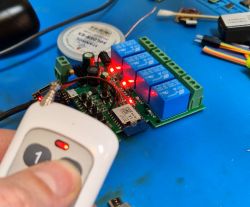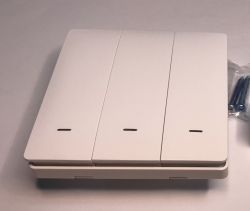FAQ
TL;DR: Wire the Hörmann HET24 like a door‑release across the intercom’s 2 terminals (S1–S2); "You plug in the HET as a lock release button (S1 and S2)." [Elektroda, sosarek, post #17569450]
Why it matters: This helps DIYers connect HET24 to an intercom-controlled electric strike for remote gate or wicket opening without guesswork.
Quick Facts
- HET24 supply range: 12–24 V DC; 12 V confirmed working by the OP. [Elektroda, qba_22, post #17571785]
- On Kenwei systems, use the lock-release input (K), terminals S1 and S2. [Elektroda, sosarek, post #17569450]
- On Blyss B‑1 uniphone, connect the HET24 contact to terminals 3 and 4. [Elektroda, Ircys, post #19606863]
- Electric strike with “memory” works from HET24’s pulse; extra timer relay not required. [Elektroda, sosarek, post #17571769]
- Non‑memory strikes may need a simple relay with hold for adequate release time. [Elektroda, sosarek, post #17569735]
How do I connect a Hörmann HET24 to my intercom to open the strike?
Use the HET24 contact as the door-release button. 1) Find the intercom’s K input, terminals S1 and S2. 2) Wire HET24’s switch output across S1 and S2. 3) To test, briefly short S1 to S2 with a wire, then trigger HET24. [Elektroda, sosarek, post #17571769]
Does the HET24 power the electric door strike directly?
No. HET24 provides a contact (impulse) only. It does not supply lock voltage. Power the strike from a proper lock power supply, and let HET24 switch the door-release circuit. [Elektroda, qba_22, post #17569381]
Do I need a timer/relay if my strike has memory?
No. A memory strike releases on a pulse and stays open until the gate closes. Wire HET24 across the lock-release input, and the strike will work from the HET24 pulse. [Elektroda, sosarek, post #17571769]
What relay should I add if my strike has no memory?
Add a simple relay with a hold (time delay) so the lock stays released long enough for entry. As one expert noted, “A simple relay with a hold, nothing more.” [Elektroda, sosarek, post #17569735]
Can I use a PZ9‑PM lock opener extender with HET24?
Yes. A PZ9‑PM converts a short ground or positive pulse into a timed relay closure. Use it when your lock circuit needs a defined release time controlled from HET24’s impulse. [Elektroda, CYRUS2, post #17569635]
Which terminals do I use on a Kenwei intercom?
Use the K input terminals S1 and S2. HET24 acts like the Kenwei door-release button when wired across S1–S2. [Elektroda, sosarek, post #17569450]
Which terminals do I use on a Blyss B‑1 intercom (wall model without handset)?
Connect the HET24 contact to terminals 3 and 4 on the uniphone. That pair is the door-release button circuit. [Elektroda, Ircys, post #19606863]
Can I wire HET24 to the S‑call (call) line instead of the K input?
No. Use the door-release input, not S‑call. Connect the HET24 contact under K (S1–S2) or the equivalent door-release terminals on your intercom. [Elektroda, sosarek, post #17571769]
How do I quickly test that the intercom side is wired correctly?
Short S1 to S2 with a small wire. The strike should release. If that works, wiring the HET24 contact across S1–S2 will replicate the button action. [Elektroda, sosarek, post #17571769]
My camera works but there’s no chime and no unlock—what should I check?
Check the wiring first. Verify each conductor, terminal, and jumper. If you added a relay timer, ensure it is correctly in series and powered. Miswires cause silent failures. [Elektroda, sosarek, post #17571396]
What voltage should I power the HET24 with?
HET24 operates from 12–24 V DC. The OP confirmed 12 V powers the module and it outputs a signal reliably. Keep polarity correct. [Elektroda, qba_22, post #17571785]
I connected HET24 directly to the strike and nothing happened—why?
That’s expected. HET24 is a control contact, not a lock power source. Connect it to the intercom’s door-release circuit, and power the strike from its power supply. [Elektroda, qba_22, post #19605041]
Do I need a separate cable run for HET24, or can I share the existing release pair?
You can parallel the HET24 contact across the same door-release button pair on the uniphone (e.g., 3–4 on Blyss). A separate line is not required. [Elektroda, Ircys, post #19606863]






